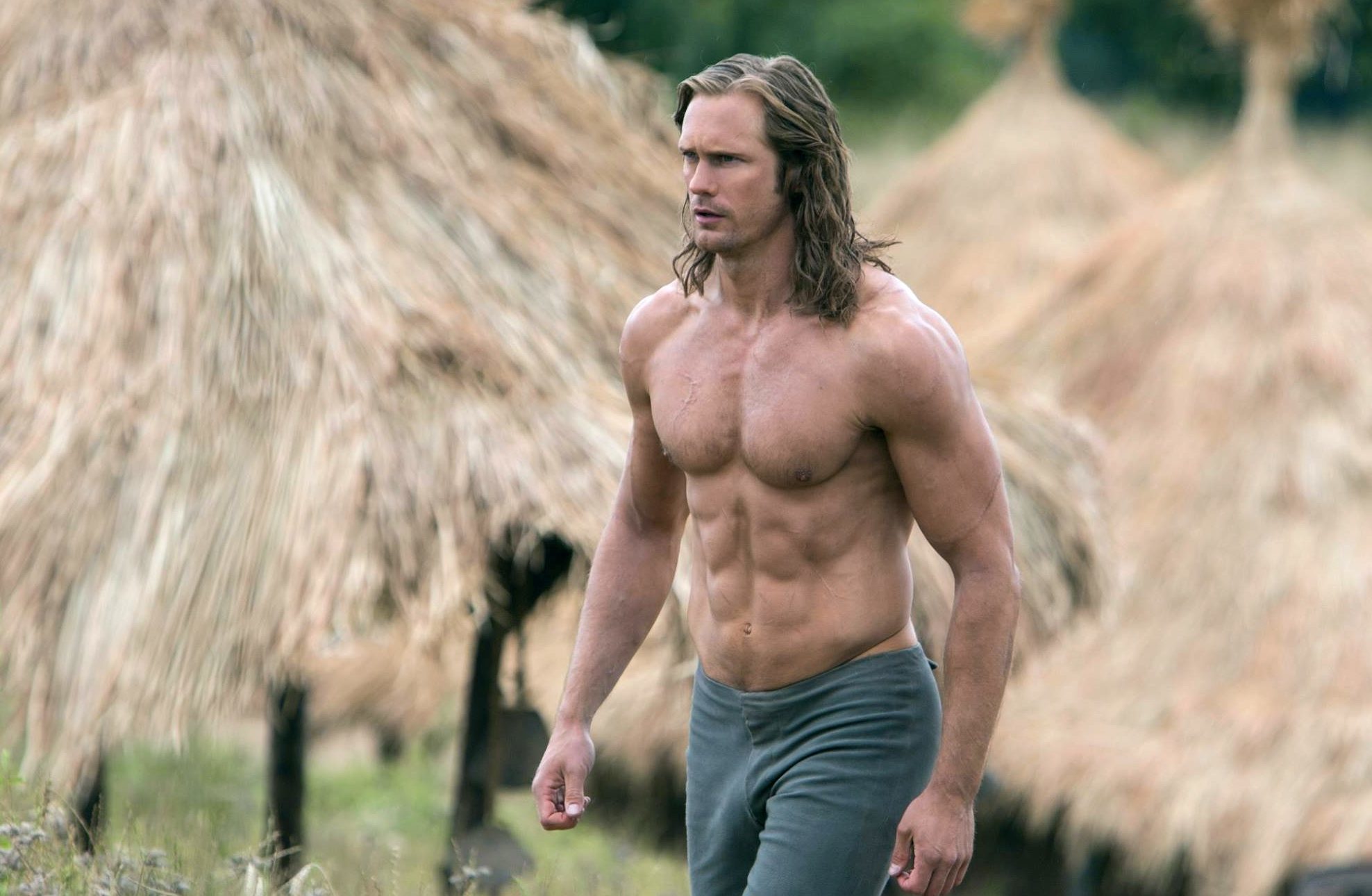
FROM Johnny Weissmuller to Ron Ely, Gordon Scott to Christopher Lambert, the list of actors who have played the role of Tarzan is as long as a jungle vine.
While the men in the lead role may change, one thing has stayed the same since the Lord of the Apes first appeared on screen in the 1930s — Tarzan’s loincloth.
But in new film The Legend of Tarzan, actor Alexander Skarsgard has done away with tradition.
“There’s no loincloth in this one,” he smiles.
“In all the flashbacks, he’s naked because if he was raised by apes, why would he be like: ‘Excuse me, guys, I am going to put this little loincloth on?’. Tarzan would be naked.
“But it’s artfully shot, so it’s not like you see everything.”
Set in the 1800s, the film takes its cue from the original novels by Edgar Rice Burroughs, rather than the “Me Tarzan, you Jane” depiction first made famous by former Olympic swimmer Weissmuller.
The film opens with Skarsgard as John Clayton III, the fifth Earl of Greystoke, but his formal education is not that one usually associated with the landed gentry.
Instead, John was raised by apes after his mother and father died while on expedition in Africa.
Having recovered from this feral upbringing to become Prime Minister of Great Britain, John is invited by Belgium’s King Leopold to return to the Congo, ostensibly to see all the good and charitable works the King has undertaken in the Central African country.
But this seemingly-grand gesture is a ruse.
John is being lured back by the King’s treacherous envoy, Leon Rom (Christoph Waltz), who intends to capture Tarzan and deliver him to an old enemy in exchange for a fortune in diamonds.
“John grew up among the apes, but he has been away from that world for almost a decade, so he is quite hesitant to go back,” explains Swedish actor Alexander, who shot to fame with English-speaking audiences thanks to his role as vampire Eric in True Blood.
“He has some enemies back in the Congo, there’s definitely a dark history there. And I think, more interestingly, he’s afraid of the man he was, so going back is quite scary for him.
“That was an aspect of the story I found really fascinating. It’s something we’re all dealing with, that kind of ‘man versus beast’, those primal instincts and urges.
“To a certain extent, we are just animals, but we try to function in a civilised modern-day society. I thought that was interesting.”
Accompanying John on the journey is his wife, Jane, played by former Neighbours star Margot Robbie.
“Although it’s set in the 19th century, it has a very modern feel to it, with universal themes that are applicable no matter what day and age it is,” reason the Australian actress.
“There is a fantastic adventure, but with a wonderful romance at its core.
“I liked that it’s not the origin story of Tarzan and Jane meeting in the jungle. Their relationship is more complex now.”
The Legend of Tarzan is at cinemas now.
READ MORE

Enjoy the convenience of having The Sunday Post delivered as a digital ePaper straight to your smartphone, tablet or computer.
Subscribe for only £5.49 a month and enjoy all the benefits of the printed paper as a digital replica.
Subscribe